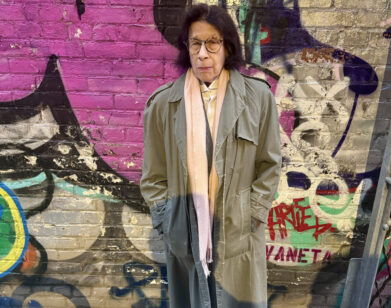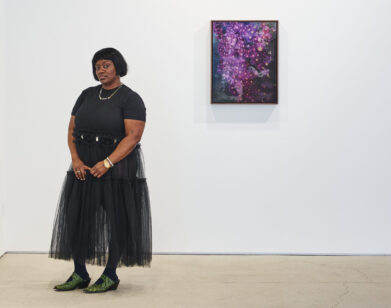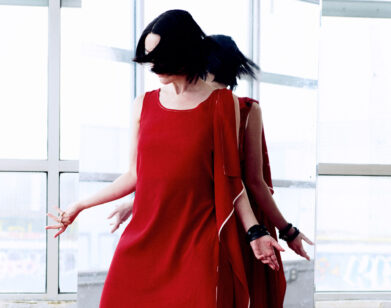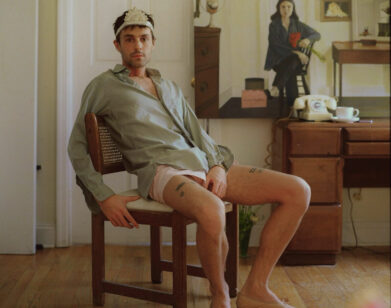A Rubens Curator Shows Us Why the Painter was the Original Art Celebrity
Long before Andy Warhol canonized the Campbell’s Soup Can with his silkscreens or before Jean-Michel Basquiat’s works became the stuff of Uniqlo T-shirts, there was Peter Paul Rubens — the artist who not only popularized the full-formed figure in art, but who was also an entrepreneur, diplomat, social networker, and shrewd businessman. A newly-opened survey of Rubens’ early works at the Legion of Honor Museum in San Francisco sheds light on how Rubens’ social connections, diplomacy, and will to shock his audience allowed him global fame in his day and an enduring legacy. Focusing on arguably the most productive years of his career — 1608 thru 1621 — the exhibit features mostly Rubens’ work after he left Italy to return to Antwerp, his childhood home. Below, we spoke with one of the exhibit’s curators, Kirk Nickel, on the Rubens’ paintings that leave no doubt to his status as the first celebrity artist.
———
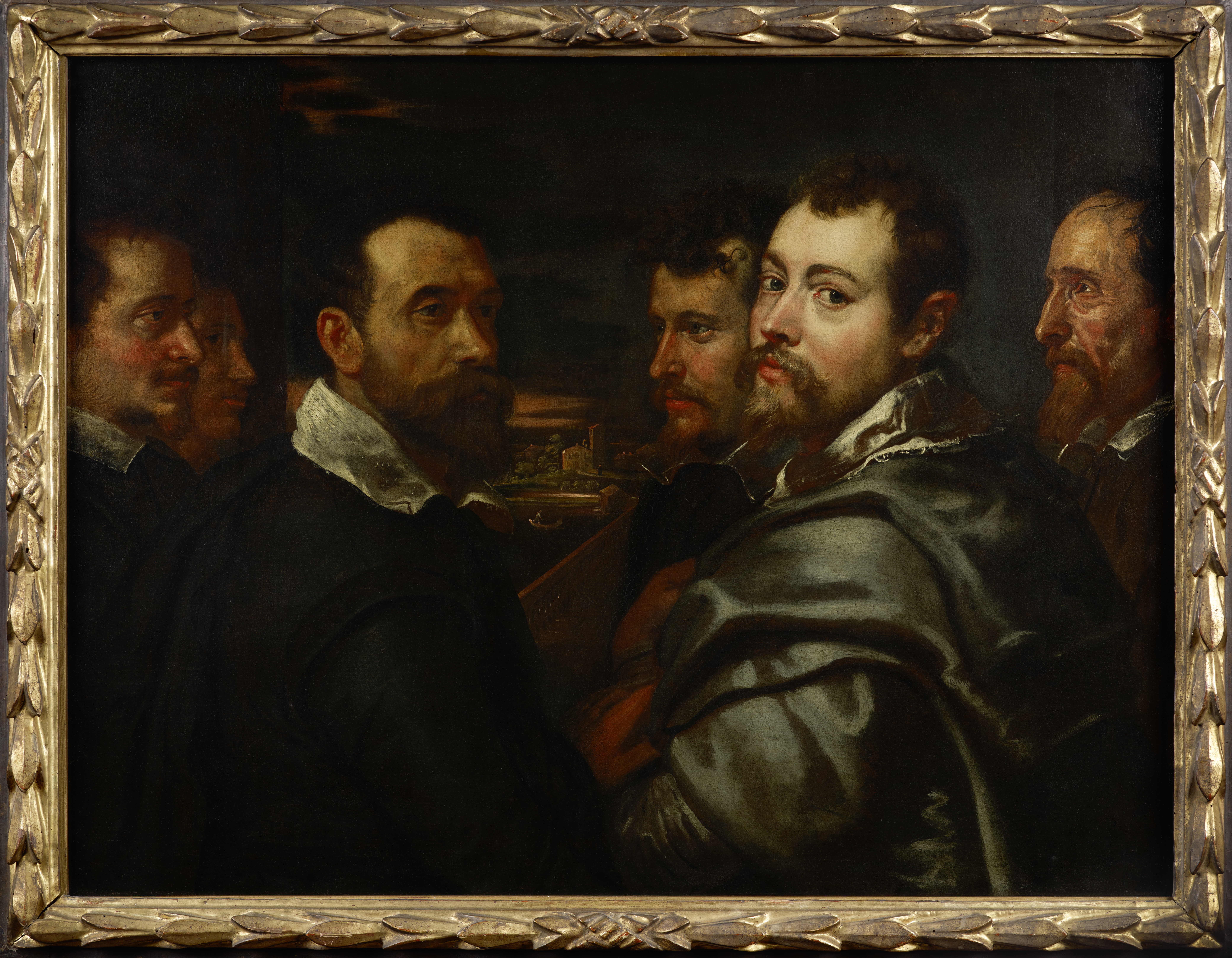
Self-Portrait in a Circle of Friends from Mantua, 1602-1604.
“This is Rubens’ first known self-portrait. He paints it while he’s in Italy and he sets it at Mantua, the court in northern Italy where he first secured a job as court painter. That’s a prestigious position, and here he shows himself, not painting but in conversation with a group of friends. They’re not all identifiable, there’s some debate about who is in this group. Some painters and scholars have been put forward — even Galileo, although that’s unlikely. The figure behind him — on the other side of him with the sort of a curl of hair on his forehead — we think is his brother, Phillippe, who was also a widely traveled scholar. He ends up helping introduce Rubens into several social circles. This is a real self-presentation that Rubens is making, noting this special job that he has at court. And not presenting himself as a painter, not in the act of painting, but as a courtier, as someone who has a reason to be in the company of the duke and the courtiers there in Mantua.”
———
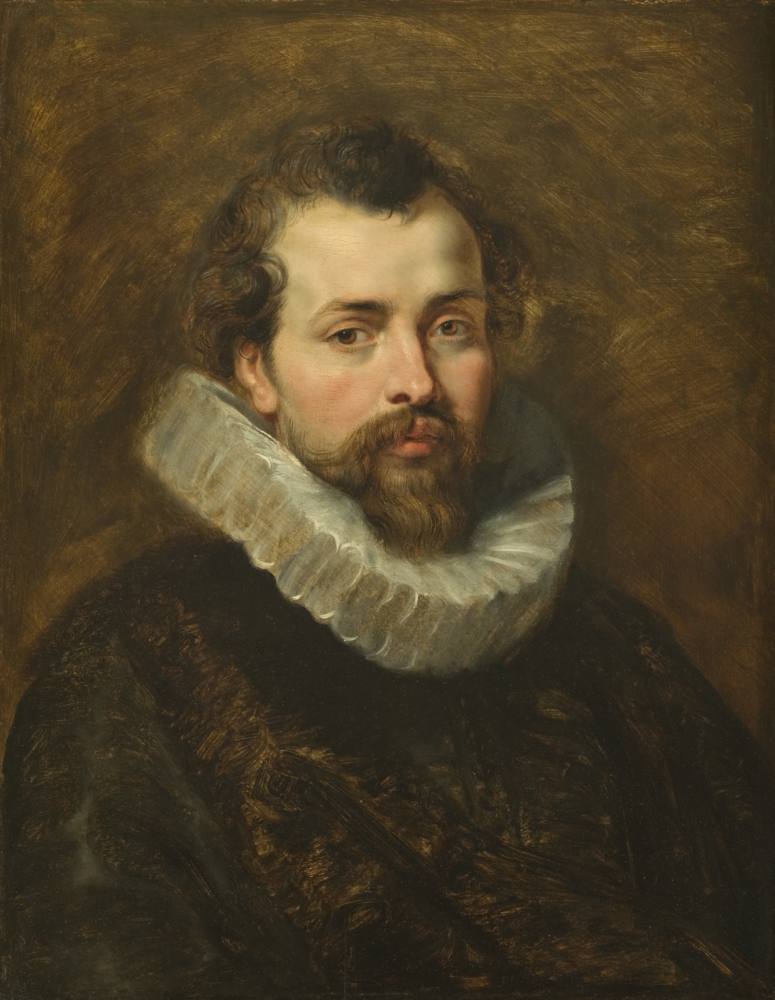
Phillippe Rubens, the Artist’s Brother, 1610-1611.
“Rubens grew up in Antwerp from about the age of ten on, and when his mother was ill he was called back there. Rubens’ brother Phillippe was influential to the artist when he was reestablishing himself there. He was the secretary to the city of Antwerp at this point, so he had an official post that could help give introductions to various city officials who end up commissioning works from him. It’s a really beautiful portrait. You can see how thinly it’s painted. The face is very faithfully rendered, and you have those wonderful skin tones and that sense of blood beneath the skin that Rubens can capture. Everything else there is so loosely rendered, you can tell that’s really just done in a flash.”
———
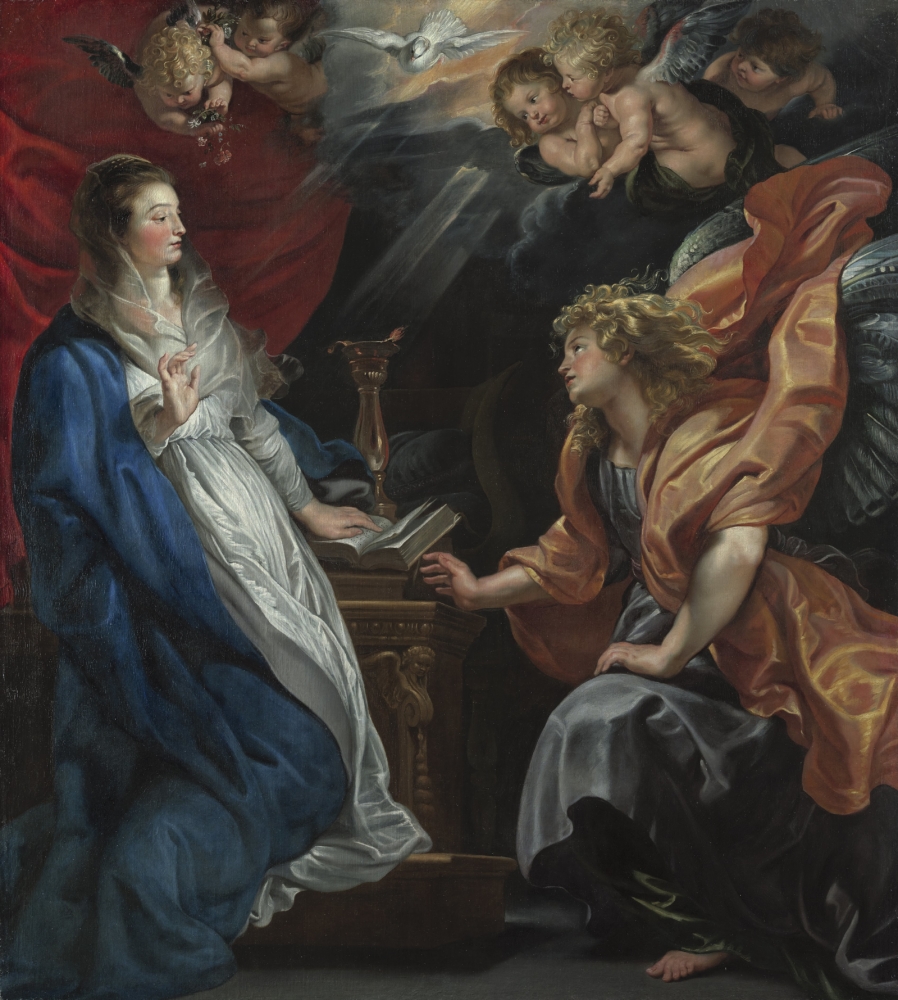
Annunciation, ca. 1610.
“The Annunciation is among the very first commissions he got when he returned to Antwerp. It’s an altar piece for the Jesuit seminary. Antwerp was sort of on the borderline of those wars that the Protestants and the Catholics were engaged in. It was sort of a mix of those political and religious divisions. It was a Catholic city and Rubens, from all the painting he had done in Italy, had worked for a number of Jesuit institutions. The painting is a common subject for altar pieces. But the way he’s presented, it is not at all common for painting in Antwerp at this time. There’s the drama of the scene. The Virgin Mary has been reading Scripture, and the angel comes rushing in with all of these smaller putti streaming in with this light. The sense of energy, the billowing drapery — all of that is more powerful than you would’ve encountered it before in Antwerp. But more than that, there’s this volumetric sense of the bodies, the softness of the flesh at the same time, especially in innocents. And you can tell that the light is bouncing around the room. You have these reflected lights even in the shadows. The sense of soft, malleable flesh that you feel has a pulse in it. All of this is revolutionary.”
———
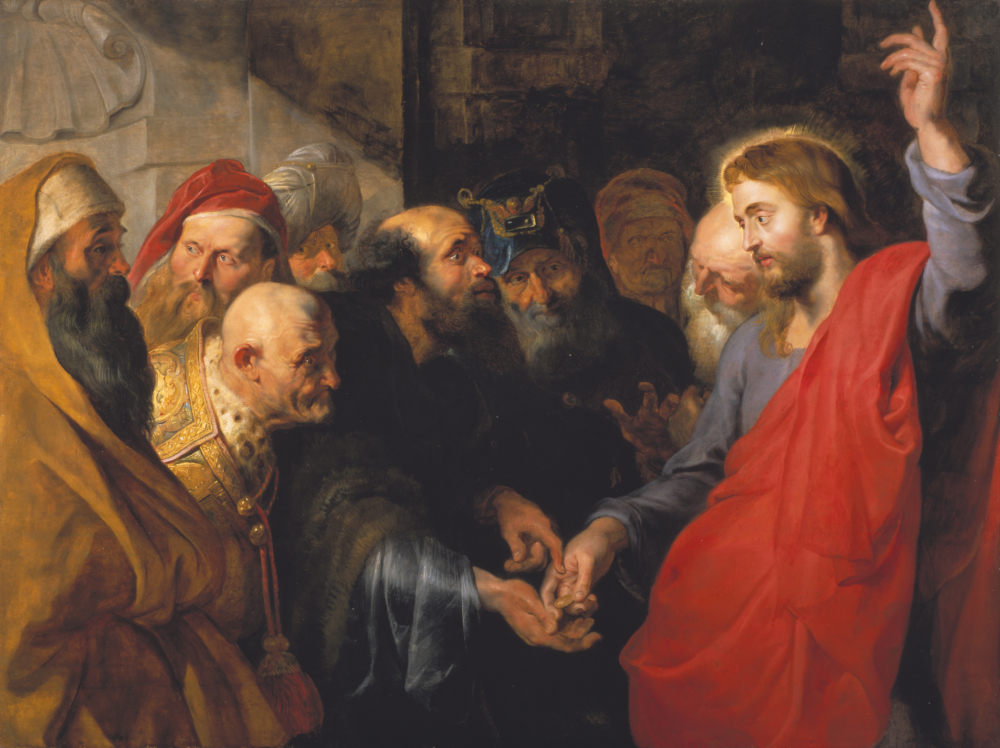
The Tribute Money, ca. 1612.
“This is a group of Jewish elders and Jesus. It certainly comes from the Gospels, so it’s religious subject matter in a way, but it certainly was not made for a religious context. This would be a scene to be appreciated, and discussed, in a home or a picture gallery. This is the moment where the Jewish elders who have come to Jesus have asked him whether the Jewish people should pay tax to the Roman government, or if they should only pay their tithes to God. This is intended as a trap to put Jesus, to put him crossways with the Roman government. And he gets out of this with his famous dictum, to be shown the coin that the tax is paid with. This figure that he’s looking at has the coin, and he sees there’s a portrait of Caesar on the coin, so he utters his phrase, “Render unto Caesar what is Caesar’s, and unto God what is God’s.”
This would’ve been appreciated as a moment of intellectual deftness, the wittiness of, I’m in an intellectual bind and I’ve managed to get out of that. Now obviously, Jesus is also presented as the son of God. He has light emanating from his head so that’s not lost on anyone, but it’s certainly, in these early years of what we now consider baroque art, this kind of engaging with the image and thinking about what is passing between the characters and our own interpretation of the scene of why it matters. And even maybe debating that, is a real part of art in this moment.”
———
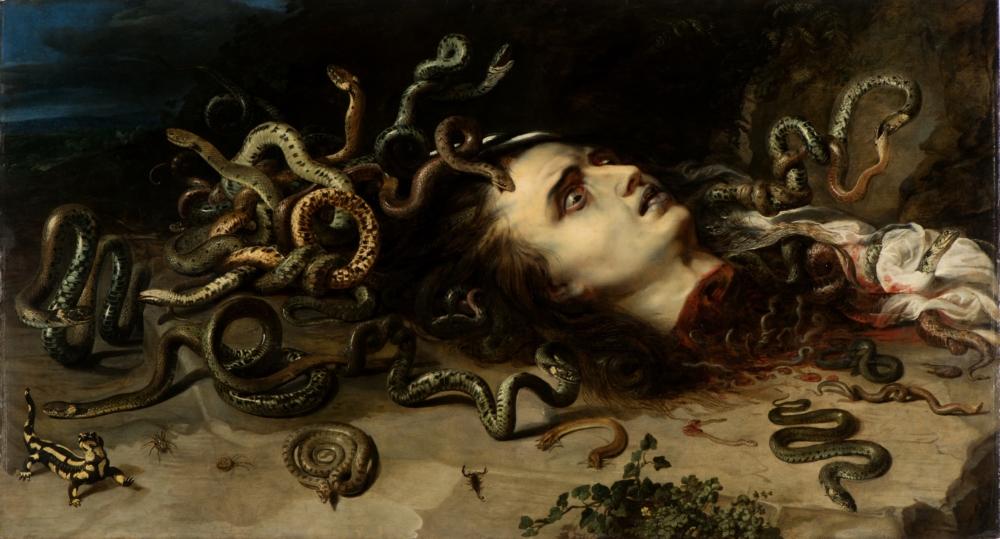
Head of Medusa, 1617-1618.
“The story here is that Medusa was a beautiful priestess of Athena who was punished and made hideously ugly. Her hair turns to serpents and anyone who looks upon her will be turned to stone. So, the hero, Perseus, ends up cutting her head off and here we see it, it’s fallen to the ground. But it also goes back to what the poet Marino was talking about with interesting contrasts, light and dark or pitiless pity. Beauty and horror — seeing a scene that’s terrifying, but is also rendered by artists in a way that is very beautiful. And that tension is really a quintessential aspect of this moment. Rubens really gets that idea of shocking subject matter that’s rendered beautifully. We have this kind of game that’s being played with the viewer. If we think of ourselves in relationship to the painting, this is a sight that would turn us to stone, right? This is something we’re not supposed to be seeing, or at least not living to tell the tale.”
———
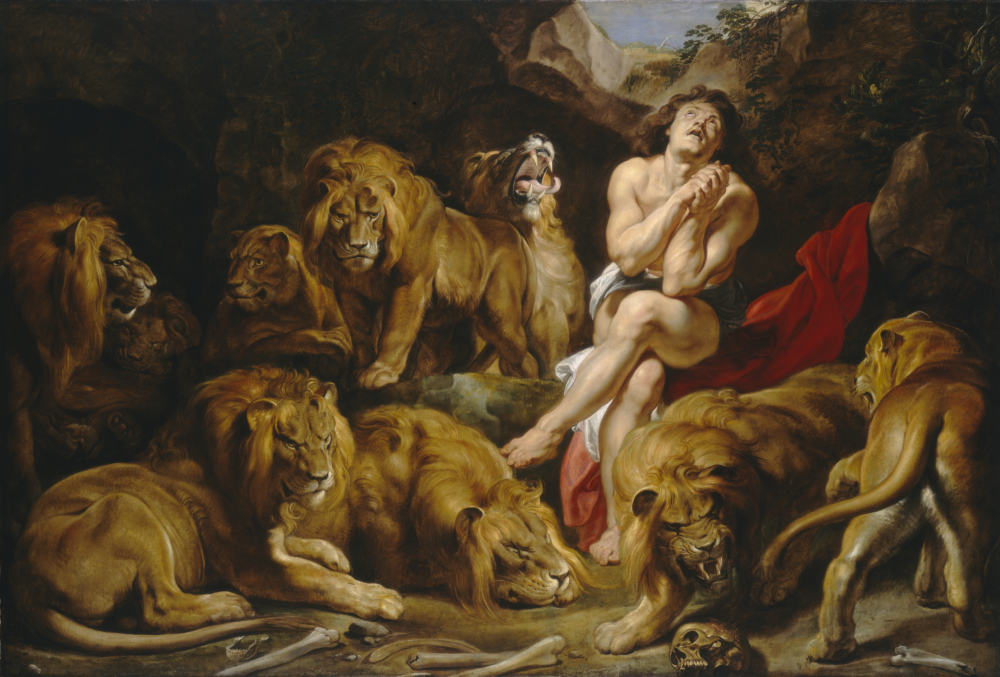
Daniel in the Lions’ Den, 1614-1616.
“This is a big painting. At this point, Rubens is now working at the sort of scale that he gained the reputation for. Daniel in the Lions’ Den is one of a few paintings that Rubens trades to the ambassador of England, a man named Dudley Carleton. Carleton has a collection of ancient sculptures and Rubens trades some of his paintings to Carleton for Carleton’s sculptures. It’s a really interesting episode in the history of art, partly because there’s this trade that puts a contemporary painter’s works almost directly on par with ancient art, in terms of value.
But also, Rubens talks about each of the paintings that he’s offering to Carleton. He talks about, this one was painted entirely by my hand, and that’s the case with the Daniel here. This painting was painted by my assistant and finished by me. And so, he gets into kind of describing how he thinks about the value of his work with regard to how much workshop participation is involved. Because by this time, by the mid-teens, he really has a large workshop, and the only way he can be producing these vast canvases simultaneously and in number is that he’s orchestrating a number of workers to do different activities in the production process. And sometimes he’s seeing things from start to finish and sometimes he’s just coming in at the end and adding sort of grace notes that make the figures sort of feel like he would finish himself. As a court painter to the archduke and duchess of Austria, he nonetheless gets to live in Antwerp, and he doesn’t have to live at the court. And he’s paid a salary. they also exempt him from the rules of the Painters’ Guild in Antwerp. And that particular aspect of the arrangement meant that he could hire as many assistants as he wanted. And so that’s a sort of, that’s a special circumstance that Rubens was allowed to have an extra large workshop that is also what helps his prolific output and sort of market domination. On top of that, these lions are tremendous.”


